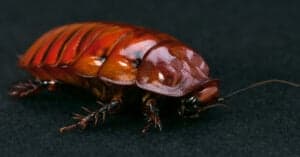Northern California is blessed with an agreeable climate and gorgeous scenery, making it a great place to visit. But, it is also home to several bug species capable of administering a painful sting or bite. While some of these bugs also occur in other states, others are only found in California. It’s best to be well informed when planning a vacation. So, below is a list of annoying insects in Northern California in large numbers and looking to bite.
1. Fleas

Fleas occur all over the world, including Northern California.
©The noob ph/Shutterstock.com
While many people associate fleas with dogs and cats, they also feed on human blood. Fleas occur all over the world, including Northern California. Unfortunately, they are tough to exterminate as they can live for months without feeding. There are various species of fleas, and generally, they only feed on a specific animal. For example, if a flea feeds on cows, it is unlikely they will feed off other animals. However, they will find a different food source if there are no cows. Luckily, these annoying insects are not usually thought of as dangerous. However, they were responsible for spreading bacteria that caused the bubonic plague, which was one of the worst diseases in history.
2. Bed Bugs
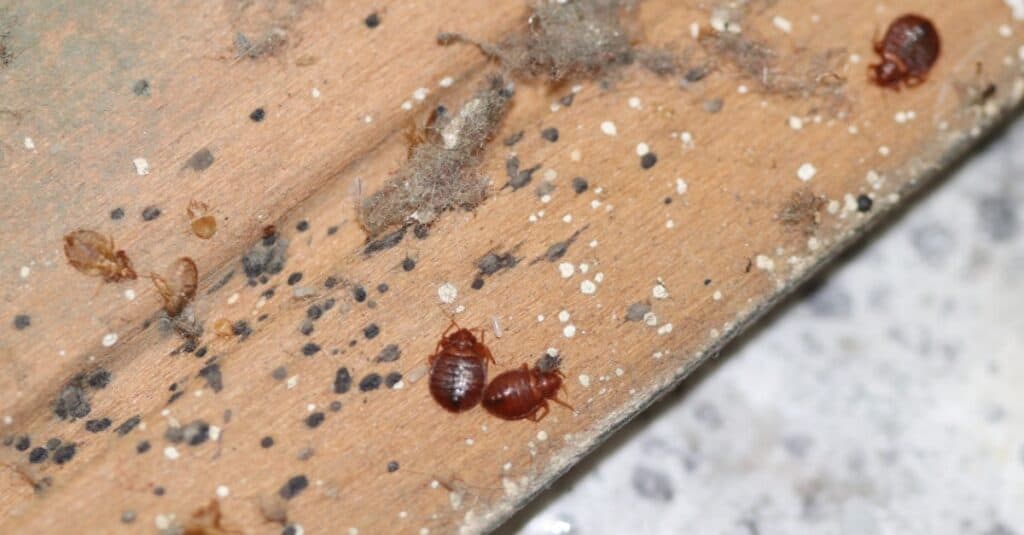
While bed bugs leave behind irritating red bite marks, they are not dangerous.
©iStock.com/Matteo Lanciano
Don’t let the bed bugs bite is not just sweet saying parents whisper to their children at night. These insects are very real and like to hide in mattresses, furniture, bedding, and crevices. However, they are hard to find because they mainly come out at night when you are sleeping. While these horrible creatures leave behind irritating red bite marks, they are not dangerous. But, infestations are tough to get rid of, and people often pick them up in hotels. When an infestation occurs, you must wash all your clothes and bedding and steam clean any furniture. Unfortunately, sometimes the infestation is too big, and a professional exterminator is necessary.
3. Mosquitoes
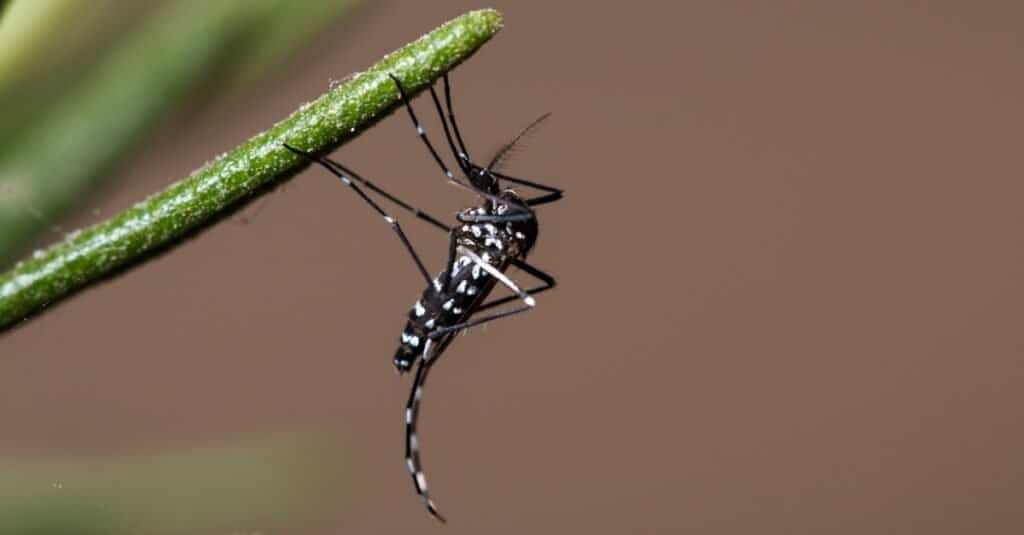
The Asian tiger mosquito carries diseases like the Zika virus, dengue fever, chikungunya fever, and yellow fever.
©Oliver Spiteri/Shutterstock.com
There’s no need to introduce these insects; mosquitoes occur in most parts of the world. But, they are present year-round in Northern California. Luckily, the mosquito species native to this state are not dangerous. But unfortunately, two invasive species, the yellow fever mosquito and the Asian tiger mosquito, are growing in numbers.
The yellow fever mosquito spreads diseases like the Zika virus, yellow fever, Mayaro virus, chikungunya, and dengue fever. These mosquitoes are distinguished by the lyre-shaped marking on their backs and the black and white markings on their legs. The Asian tiger mosquito also carries diseases like the Zika virus, dengue fever, chikungunya fever, and yellow fever.
4. Biting Midges
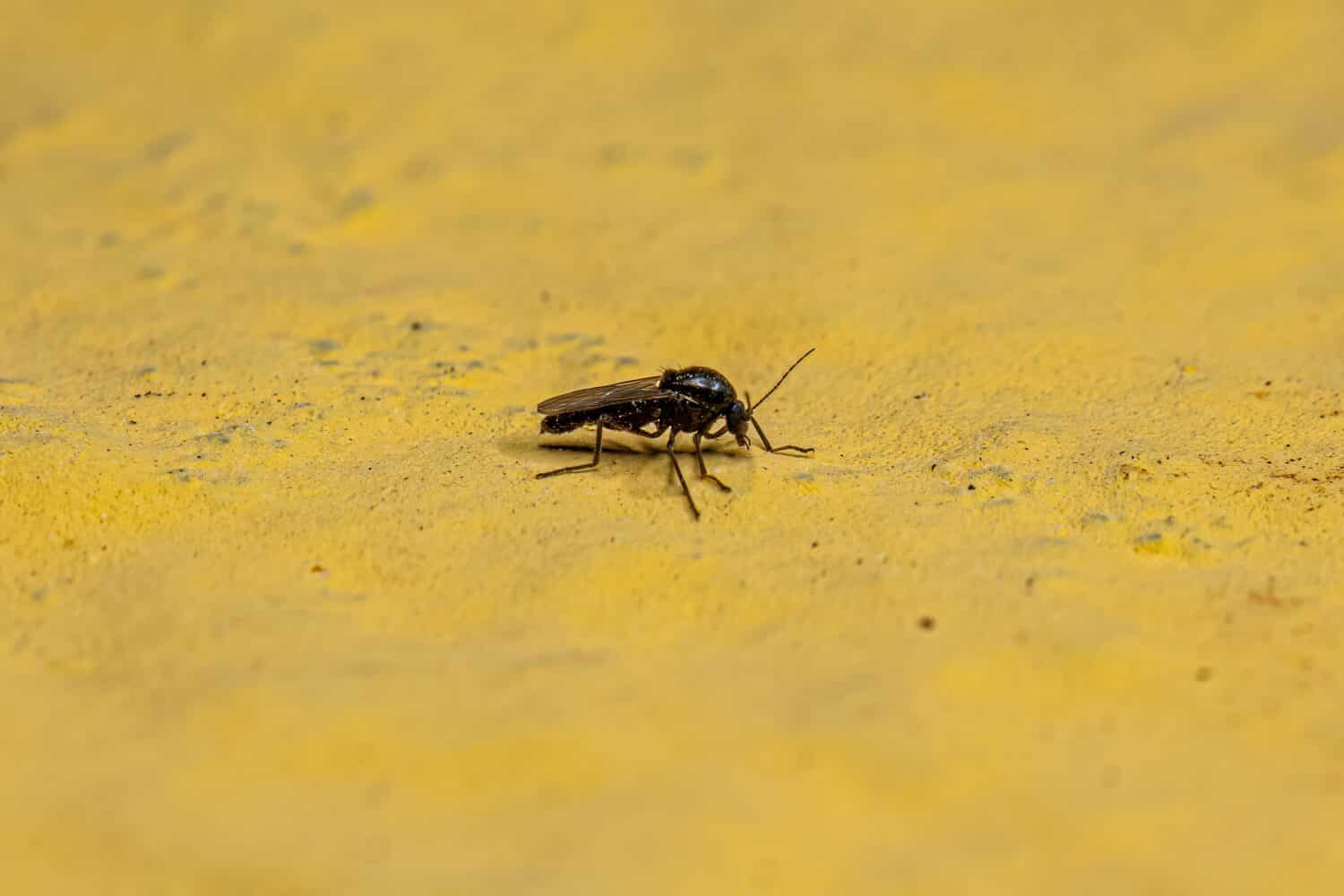
Biting midges don’t belong to one species. It’s a term used for a wide range of biting insects that can fly and belong to the Ceratopogonidae family.
Image: Vinicius R. Souza, Shutterstock
©Vinicius R. Souza/Shutterstock.com
Biting midges don’t belong to one specie. It’s a term used for a wide range of biting insects that can fly and belong to the Ceratopogonidae family. These bugs occur worldwide, but those inhabiting Northern California are known as “no-see-ums” thanks to their tiny size. They are black and typically bite people in wet, grassy areas. Luckily, the biting midges in Northern California do not carry diseases, but they are still considered a nuisance. These insects are attracted to moisture, so they are prevalent in areas close to water.
5. Kissing Bugs
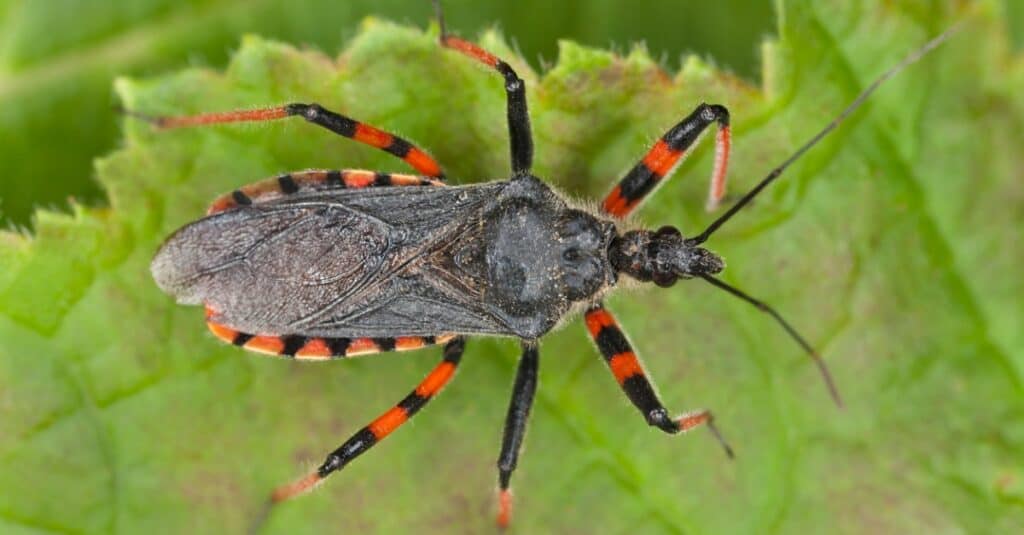
Kissing bugs, also known as conenose bugs, are minuscule blood-sucking insects that occur in Northern California, especially in mountainous areas and rural foothills.
©Henrik Larsson/Shutterstock.com
Kissing bugs, also known as conenose bugs, are minuscule blood-sucking insects that occur in Northern California, especially in mountainous areas and rural foothills. Unfortunately, these insects are notorious for carrying the parasite Trypanosoma cruzi, which is responsible for Chagas disease. While this disease is rare in the United States, it is common in rural Latin America. Additionally, some people also suffer from severe allergic reactions to kissing bug bites.
These bugs are distinguished by their cone-shaped head, thus the name, conenose bug. They are also identified by their dark brown or black bodies and wings. Most kissing bugs find their way into homes at night, as they are nocturnal and attracted to light. Therefore, if you live in Northern California, it’s best to have screens on your doors and windows.
6. Buffalo Gnats
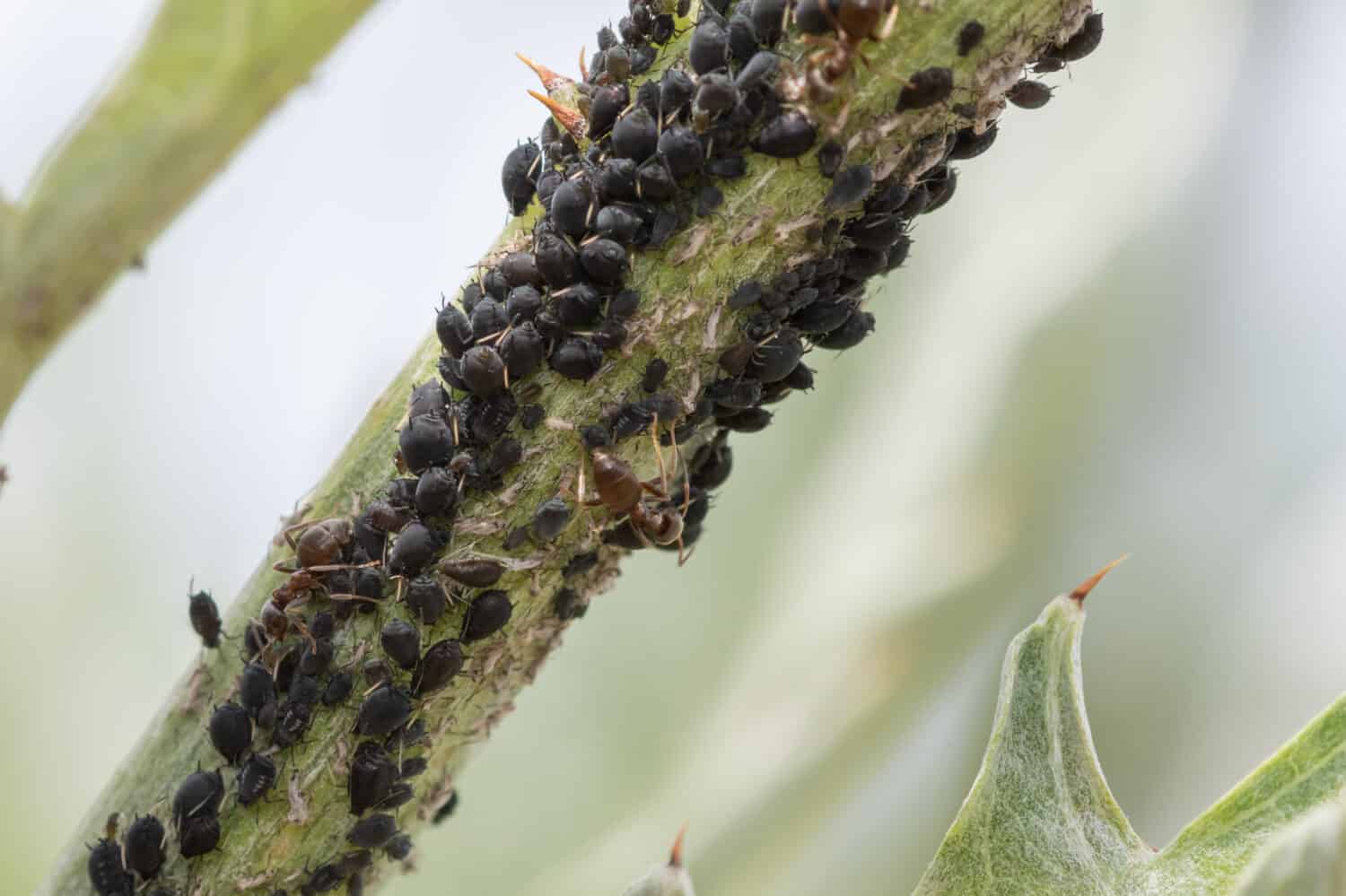
While these bugs are more prevalent in Southern California, they are now establishing themselves in Northern California.
Image: Tom Meaker, Shutterstock
©Tom Meaker/Shutterstock.com
Buffalo gnats are also called black flies or turkey gnats. They are little black flying insects with obvious humped backs. While these bugs are more prevalent in Southern California, they are now establishing themselves in Northern California. There are large numbers around water sources like artificial waterfalls and fountains, as they breed and lay their eggs in moving water.
7. Chiggers

Chiggers are the larval form of berry bugs, red bugs, or harvest mites.
©Matauw/Shutterstock.com
Chiggers are the larval form of berry bugs, red bugs, or harvest mites. These insects are almost microscopic. During this phase in their lifecycle, they attach themselves to animals or humans but they don’t feed on the blood. They feed on skin, resulting in a severe itch. But, when they are not attached to a host, they live in brush or grass. As a result, people usually pick them up when enjoying outdoor activities. However, their bites are not dangerous, but applying itch-relieving cream won’t hurt.
8. Spiders
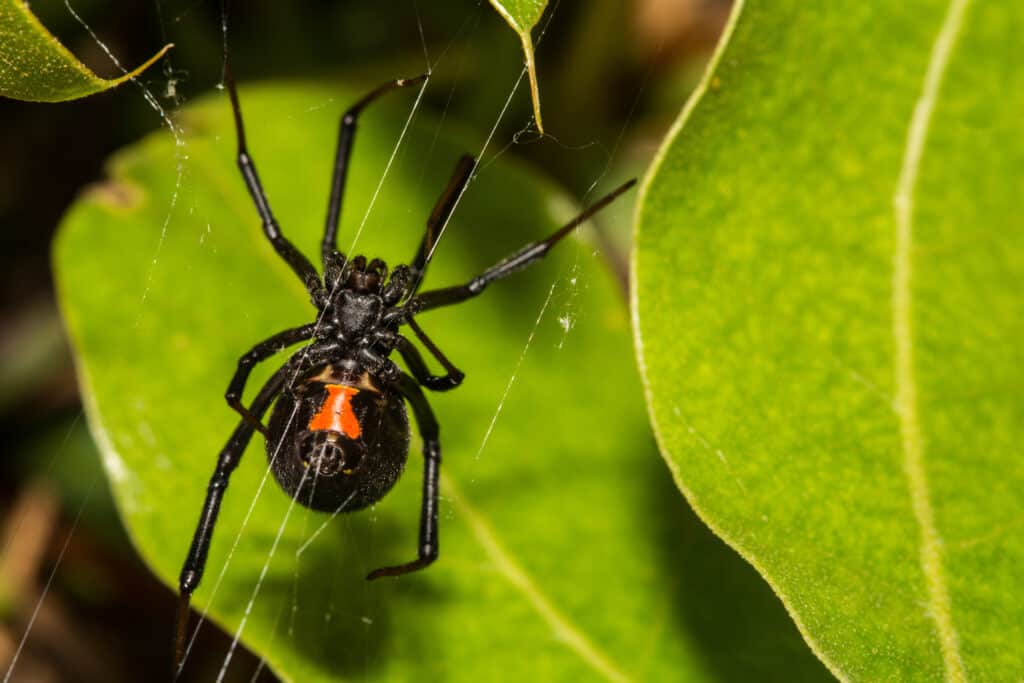
One spider in Northern California can cause severe harm: the black widow.
©Jay Ondreicka/Shutterstock.com
Northern California is home to around 66 species of spider. However, most of them aren’t poisonous. Therefore, most spider bites result in inflammation, swelling, itching, and pain for a few hours or a couple of days. Usually, these symptoms disappear after one or two days, but getting the bite checked out is always best. Unfortunately, one spider in Northern California can cause severe harm, the black widow. These dangerous spiders like to hide in dark areas. They have round bodies with red markings on their abdomens. Black widows are aggressive if provoked, and their poison can be fatal.
9. Mites
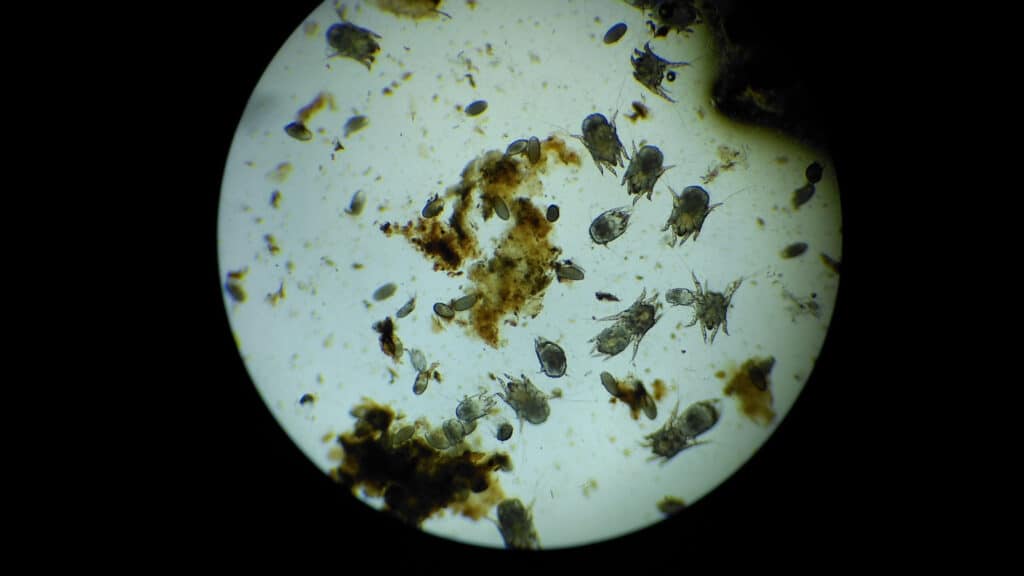
It is common to find ear mites in dogs, which is one of the causes of mange.
©Suppada Kananub/Shutterstock.com
Northern California has several types of mites, but only some can bite. Surprisingly, mites are related to spiders as they are arachnids. The ones that bite usually specialize in feeding on a certain type of animal. For example, Sarcoptes mites primarily feed on dogs but will feed on humans if they can’t find a dog. Their bites are extremely itchy, and if you scratch too much, it can lead to infection. Mites are hard to find because they are so tiny and hard to see with the naked eye. These insects can be very dangerous as some species cause scabies, mange, and typhus.
10. Ticks
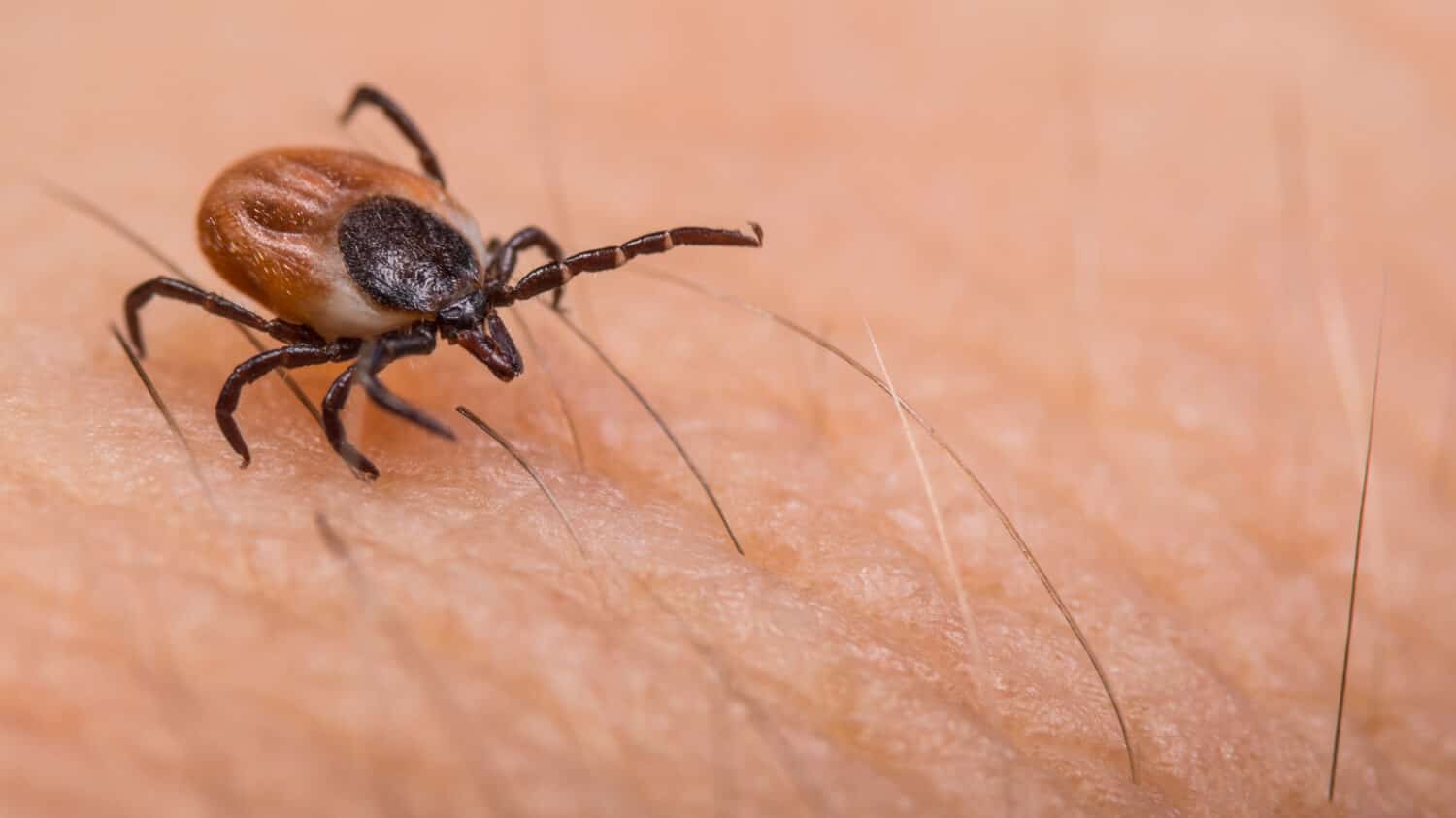
One common mistake people make is when they find a tick on their skin, they rip it off, often leaving behind part of its mouth. When this happens, it can cause infection.
Image: KPixMining, Shutterstock
©KPixMining/Shutterstock.com
Ticks are one of the most dangerous insects inhabiting Northern California. They are also related to spiders, as they are arachnids. These insects search for a moist, warm area of a body before piercing the skin to suck blood. Unfortunately, ticks carry some devastating diseases, some fatal. Luckily, it is rare for ticks in Northern California to carry serious diseases, but there are cases of Lyme disease, which can destroy someone’s life. One common mistake people make is when they find a tick on their skin, they rip it off, often leaving behind part of its mouth. When this happens, it can cause infection. The best way to remove a tick is by letting it suck your blood until it drops off naturally or use a tweezer to twist it off.
The photo featured at the top of this post is © Matauw/Shutterstock.com
Thank you for reading! Have some feedback for us? Contact the AZ Animals editorial team.





